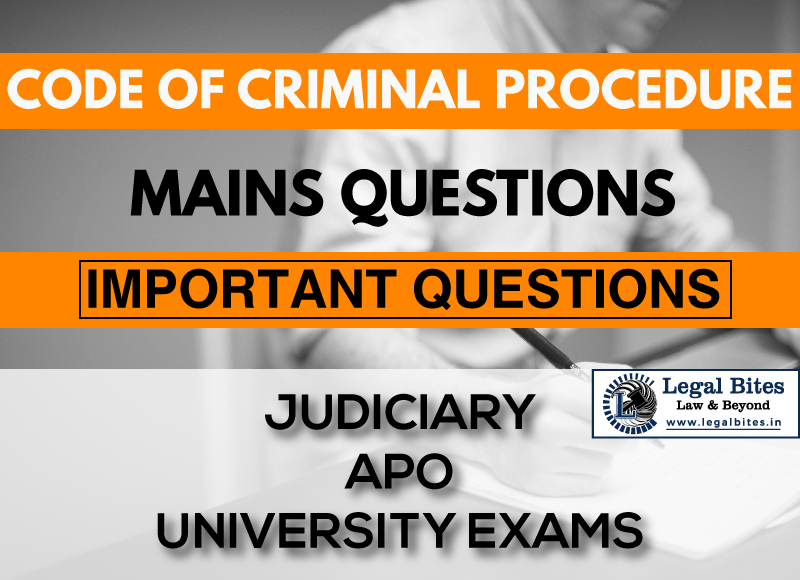When and under what circumstances an attachment of the subject of the dispute is made?
Question: When and under what circumstances an attachment of the subject of the dispute is made? [RJS, 1991] Find the answer to the mains question only on Legal Bites.[When and under what circumstances an attachment of the subject of the dispute is made?] Answer Section 146 Here also the property is attached due to the same reason as… Read More »

Question: When and under what circumstances an attachment of the subject of the dispute is made? [RJS, 1991] Find the answer to the mains question only on Legal Bites.[When and under what circumstances an attachment of the subject of the dispute is made?] Answer Section 146 Here also the property is attached due to the same reason as found in Section 145 i.e. to maintain peace and tranquillity if there is a dispute which may likely cause the breach of peace. So even if there is an...
Question: When and under what circumstances an attachment of the subject of the dispute is made? [RJS, 1991]
Find the answer to the mains question only on Legal Bites.[When and under what circumstances an attachment of the subject of the dispute is made?]
Answer
Section 146 Here also the property is attached due to the same reason as found in Section 145 i.e. to maintain peace and tranquillity if there is a dispute which may likely cause the breach of peace. So even if there is an apprehension of breach of peace, Section 146 can be exercised.
Attachment is done by the Criminal Court i.e. as per the provisions of CrPC despite the suit property is being civil in nature is not unjustified due to the objective of maintaining peace and harmony. Section 145 and 146 have been made with a similar viewpoint, objective.
Grounds under Section 146
The property i.e. the subject of the dispute can be attached under Section 146(1) when
- At the time of determining under Section 145(1) , considers a case of emergency
- Decides that none of the party was in possession
- EM is Unable to satisfy himself as to who was in the possession of the property
The order of attachment can be withdrawn at any time when the EM is satisfied that there is no likelihood of breach of peace with regard to the subject of the dispute.
Once the property has been attached under Section 146 the final decision will be taken by the competent Court and not the Court who has attached. In the case of Shanti Kumar Panda v. Shakuntala Devi [(2004) 1 SCC 438] Held that Section 146 is a summary remedy where for the time being to maintain law, peace, order, harmony in the society, the property is attached.
If an attachment has been made under Section 145(1), the successful party may not claim relief of possession but if the rights of the parties have been adjudicated by the competent court then since the property is held to be custodia-legis by the EM, the successful person can take back the possession of the property as his rights have been already determined.
The competent Court under Section 146(1) does not only mean a civil court but any such court which has the jurisdiction to determine the dispute with respect to that property.
Important Mains/Long Questions for Judiciary, APO & University Exams
- CRPC Mains Questions Series Part I: Important Questions
- CRPC Mains Questions Series Part II: Important Questions
- CRPC Mains Questions Series Part III: Important Questions
- CRPC Mains Questions Series Part IV: Important Questions
- CRPC Mains Questions Series Part V: Important Questions
- CRPC Mains Questions Series Part VI: Important Questions
- CRPC Mains Questions Series Part VII: Important Questions
- CRPC Mains Questions Series Part VIII: Important Questions
- CRPC Mains Questions Series Part IX: Important Questio
- CRPC Mains Questions Series Part X: Important Questions
- CRPC Mains Questions Series Part XI: Important Questions
Admin Legal Bites
Legal Bites Study Materials correspond to what is taught in law schools and what is tested in competitive exams. It pledges to offer a competitive advantage, prepare for tests, and save a lot of money.
